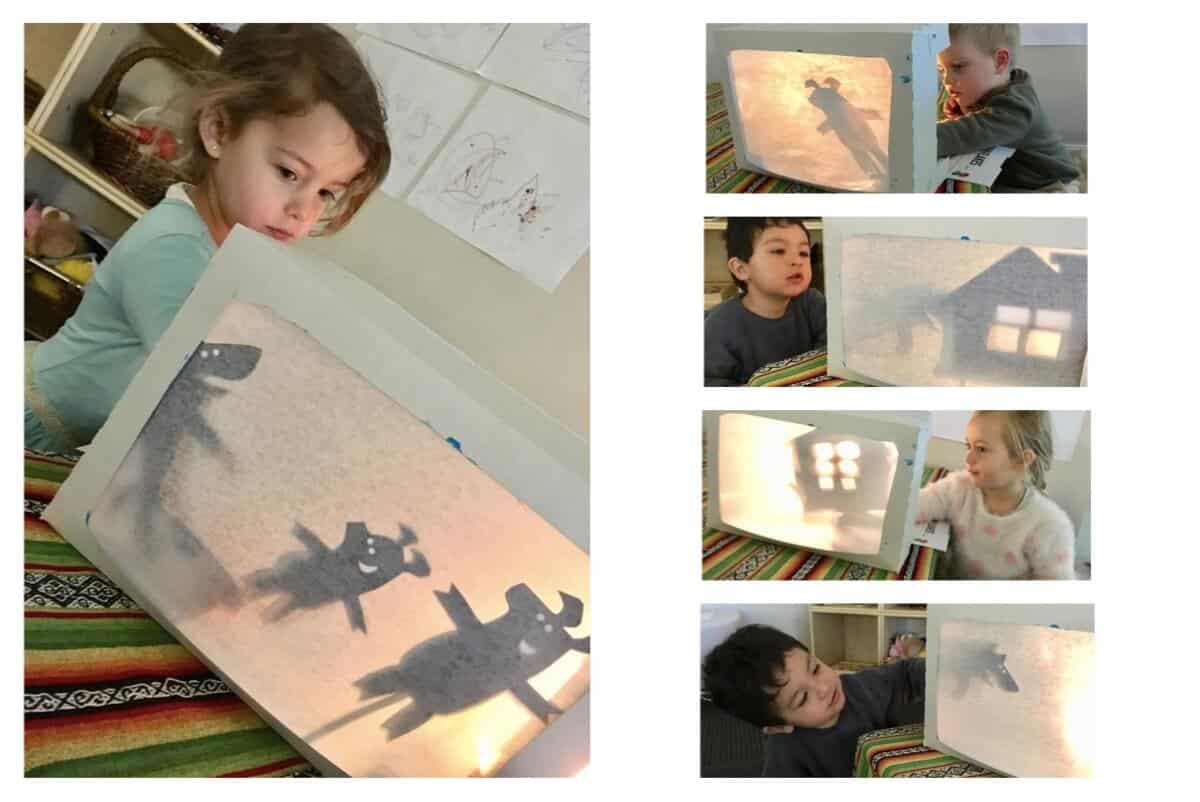Ages 2+
Put on a Show: Shadow Puppet Theatre
Playing with puppets and creating your own puppet theatre
Retelling stories encourages children to use their imagination, expand their ideas and vocabulary and create visual images to carry the meaning of their story. In the retelling of a story, children may include different characters or new voices and transform a traditional story to one of their own.
How to create a Shadow Puppet Theatre…
1. Choose a favourite familiar story, read it together and start talking about what happened or how the characters might feel at particular parts of the story.
2. Ask your child if there is something they might like to add or change about the story. Perhaps you might suggest a new scenario or character and ask your child what might happen next.
3. While having these conversations, start making shadow puppets and a stage.

Things you will need
- A cardboard box to create your stage
- Translucent paper such as tissue paper or baking paper
- Dark coloured heavy paper or light card
- Sticks, tape, scissors, pens
- A lamp or torch
- A camera
To make the stage
- Cut most of the bottom out of the cardboard box. Leave approximately 8 cm of the base all the way around to provide structural support and a place to attach your paper screen.
- Attach the translucent paper over the hole you have made. Tape in place.
- Place the box on its side and your stage is ready.
- Draw outlines of the characters and essential objects such as trees, houses or vehicles on the heavy paper. Cut them out. Attach stick handles with tape.
- Place the lamp or torch behind the box screen, lighting up the translucent paper from within.
- Place the puppets between the light and the paper screen an invite your child to tell their story.
- Ask questions along the way to prompt further thinking: What happened next? How did the character feel? What did the character say? What does their voice sound like or what noises do they make?
What Learning is Occurring?
- Language and communication developing a rich expressive vocabulary. Expressing ideas through a range of media.
- Early literacy telling a story through engaging with a range of media – books and puppetry.
- Critical and creative thinking as children create light and shadows, consider new scenarios and characters, solve
problems and express emotions through the telling of their story
Created by Margie Cohen, ECT Mentor with inspiration and images from Educator, Parveen Dhull and the children at Guardian Marsfield
